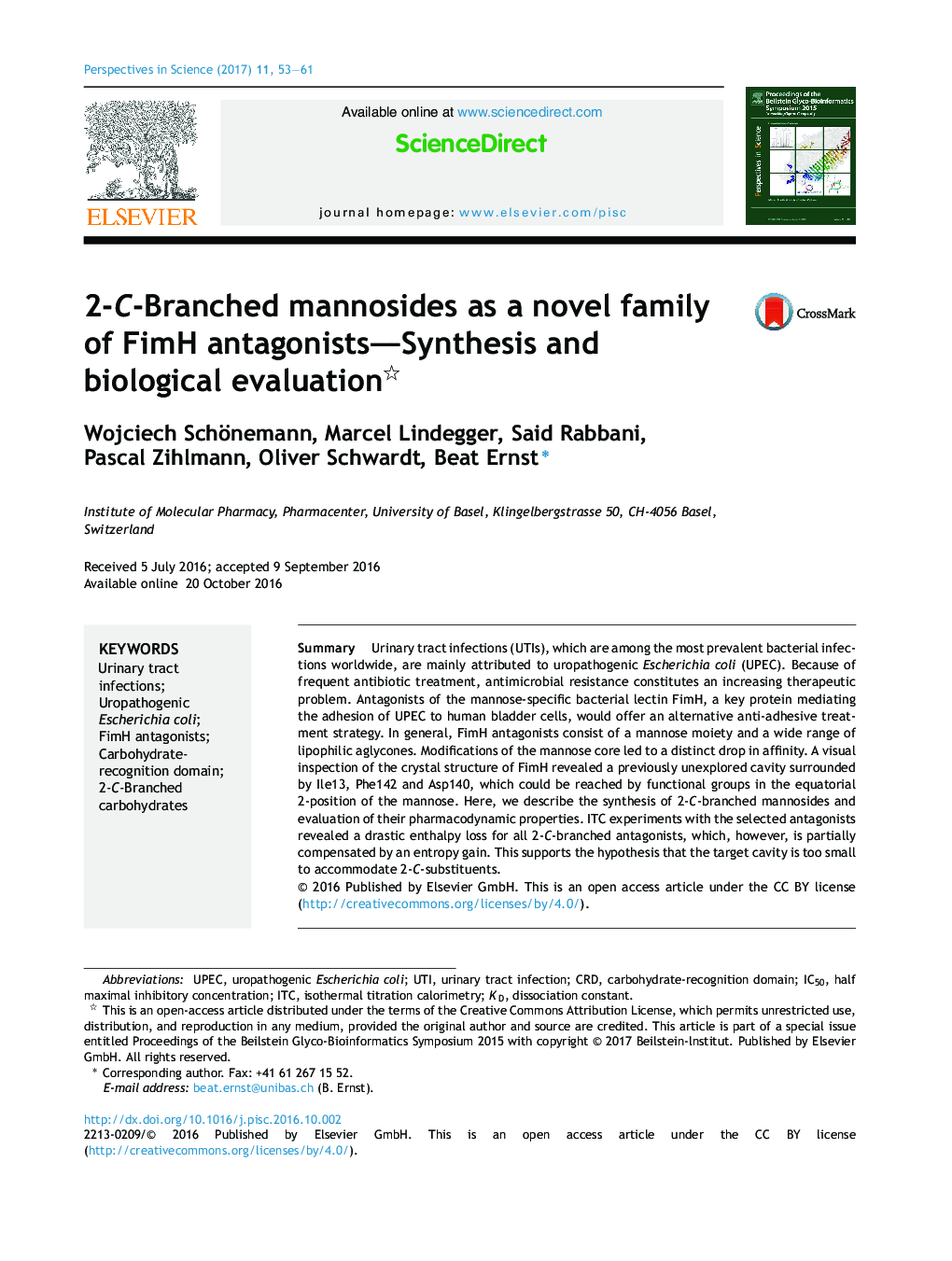| Article ID | Journal | Published Year | Pages | File Type |
|---|---|---|---|---|
| 5518799 | Perspectives in Science | 2017 | 9 Pages |
SummaryUrinary tract infections (UTIs), which are among the most prevalent bacterial infections worldwide, are mainly attributed to uropathogenic Escherichia coli (UPEC). Because of frequent antibiotic treatment, antimicrobial resistance constitutes an increasing therapeutic problem. Antagonists of the mannose-specific bacterial lectin FimH, a key protein mediating the adhesion of UPEC to human bladder cells, would offer an alternative anti-adhesive treatment strategy. In general, FimH antagonists consist of a mannose moiety and a wide range of lipophilic aglycones. Modifications of the mannose core led to a distinct drop in affinity. A visual inspection of the crystal structure of FimH revealed a previously unexplored cavity surrounded by Ile13, Phe142 and Asp140, which could be reached by functional groups in the equatorial 2-position of the mannose. Here, we describe the synthesis of 2-C-branched mannosides and evaluation of their pharmacodynamic properties. ITC experiments with the selected antagonists revealed a drastic enthalpy loss for all 2-C-branched antagonists, which, however, is partially compensated by an entropy gain. This supports the hypothesis that the target cavity is too small to accommodate 2-C-substituents.
